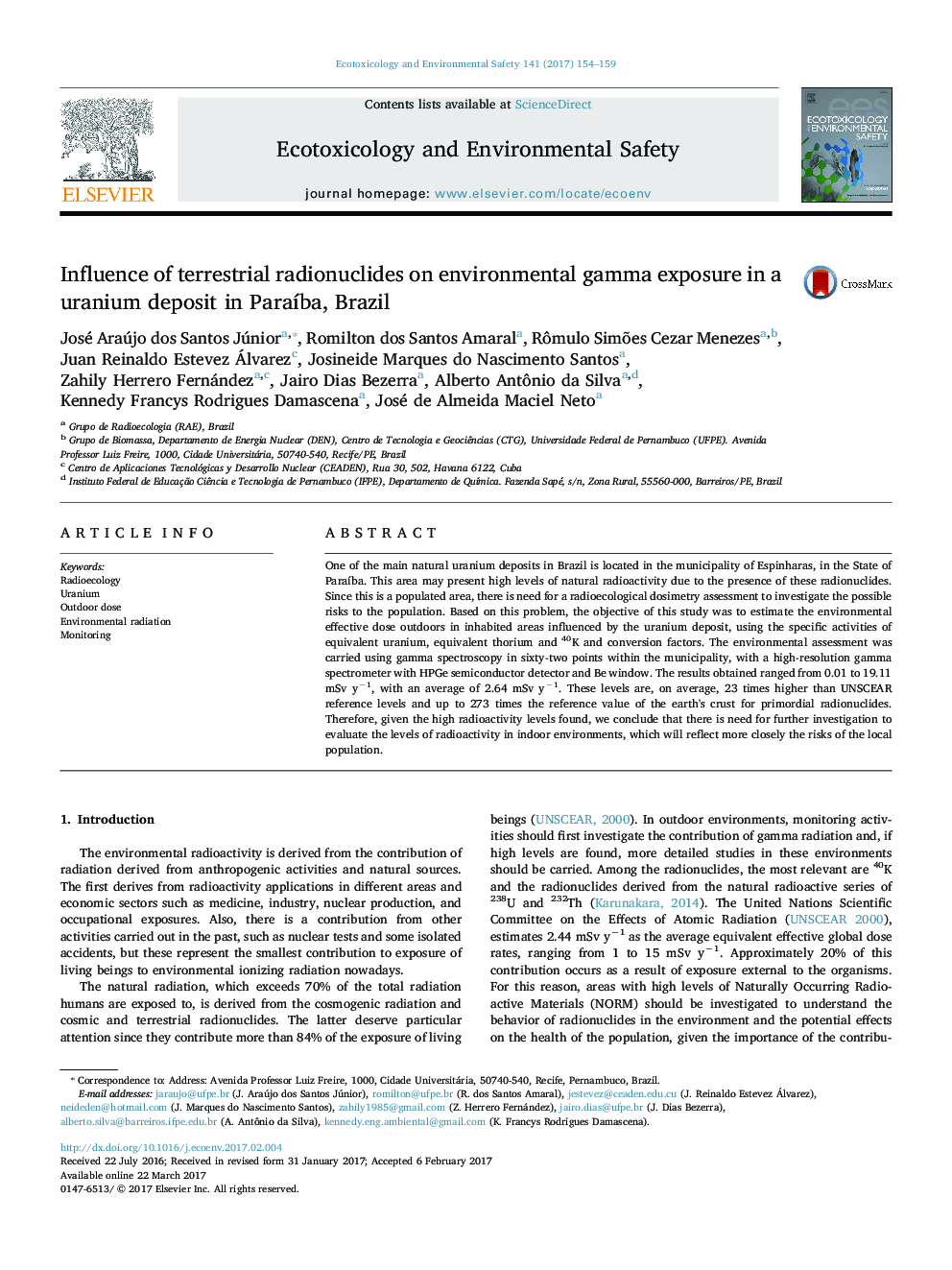| Article ID | Journal | Published Year | Pages | File Type |
|---|---|---|---|---|
| 5747929 | Ecotoxicology and Environmental Safety | 2017 | 6 Pages |
â¢We carried an environmental radiometric monitoring to calculate the influence of terrestrial radionuclides.â¢We used a gamma spectrometry to estimate radiation levels in an area with an uranium deposit in Espinharas, PB, Brazil.â¢This study aimed to carry out environmental radiation tests to estimate the effective equivalent dose rate.â¢The study also allowed the analysis of possible environmental risks in the study area.
One of the main natural uranium deposits in Brazil is located in the municipality of Espinharas, in the State of ParaÃba. This area may present high levels of natural radioactivity due to the presence of these radionuclides. Since this is a populated area, there is need for a radioecological dosimetry assessment to investigate the possible risks to the population. Based on this problem, the objective of this study was to estimate the environmental effective dose outdoors in inhabited areas influenced by the uranium deposit, using the specific activities of equivalent uranium, equivalent thorium and 40K and conversion factors. The environmental assessment was carried using gamma spectroscopy in sixty-two points within the municipality, with a high-resolution gamma spectrometer with HPGe semiconductor detector and Be window. The results obtained ranged from 0.01 to 19.11 mSv yâ1, with an average of 2.64 mSv yâ1. These levels are, on average, 23 times higher than UNSCEAR reference levels and up to 273 times the reference value of the earth's crust for primordial radionuclides. Therefore, given the high radioactivity levels found, we conclude that there is need for further investigation to evaluate the levels of radioactivity in indoor environments, which will reflect more closely the risks of the local population.
